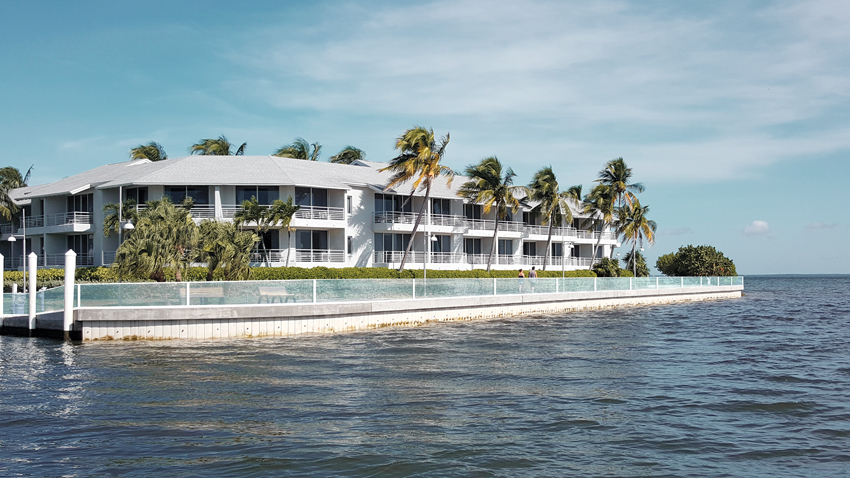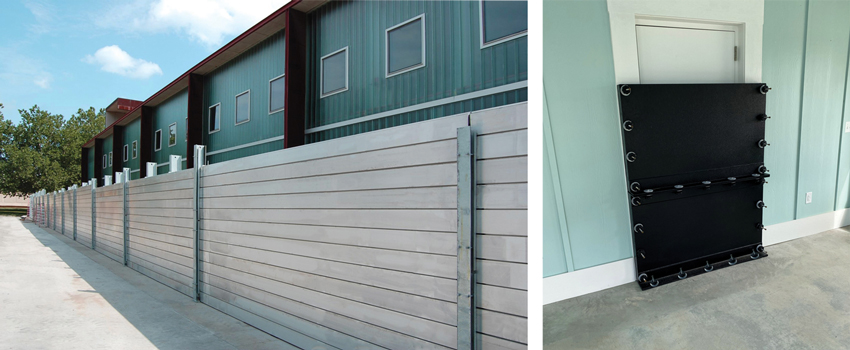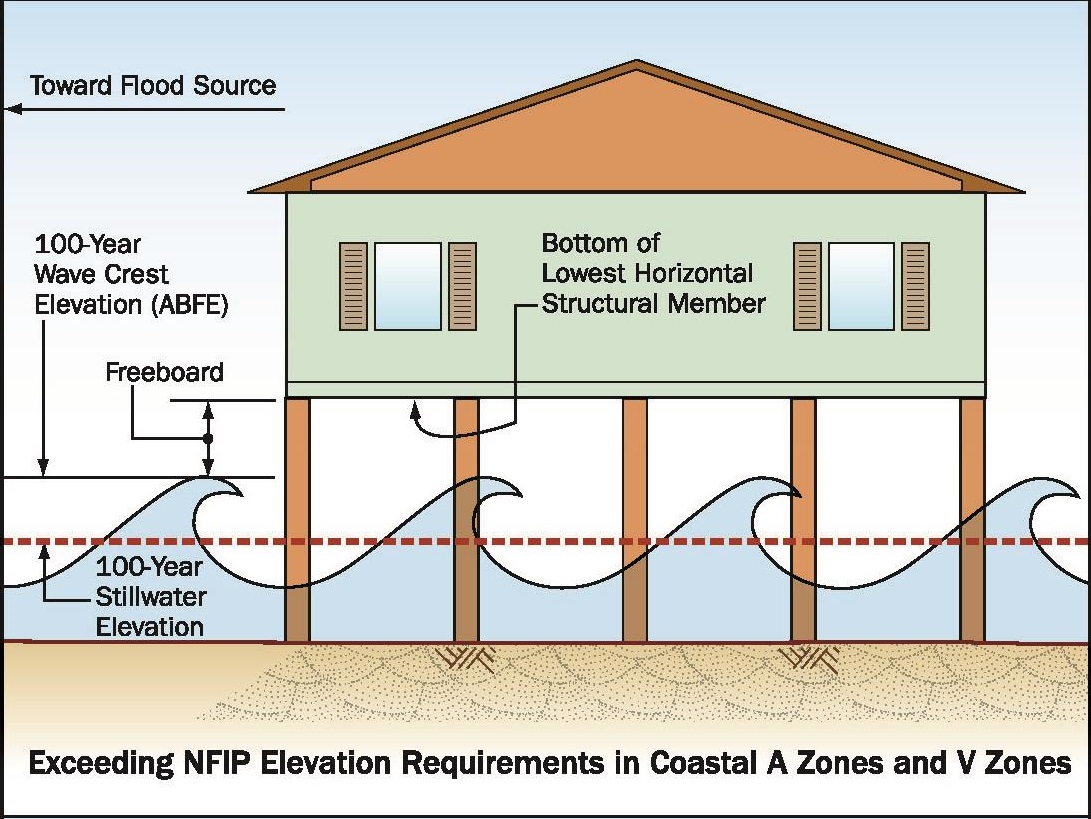Floodproof Window Systems and Glass Flood Walls
Learning Objectives:
- Identify and compare the different types of floodproofing systems, including conventional, active, and passive dry floodproofing solutions.
- Review the current regulatory standards and requirements related to flood protection in buildings.
- Explain different types of passive systems including impact windows, floodproof windows, and flood walls that meet local, state, and federal regulations.
- Assess the costs of passive versus active dry floodproofing systems for buildings.
Credits:
This course is approved as a Structured Course
This course can be self-reported to the AANB, as per their CE Guidelines
Approved for structured learning
Approved for Core Learning
This course can be self-reported to the NLAA
Course may qualify for Learning Hours with NWTAA
Course eligible for OAA Learning Hours
This course is approved as a core course
This course can be self-reported for Learning Units to the Architectural Institute of British Columbia
Flooding has become a more common occurrence in many locations prompting architects and other design professionals to seek ways to protect people and buildings from often damaging effects. Finding ways to achieve that protection so that buildings remain resilient, dry, and operational is a design challenge that needs to balance effectiveness with aesthetics and budget. Increasingly, such solutions also need to meet local, state, or federal standards to satisfy code requirements or insurability. In cases where a building is a critical facility, such as a hospital or emergency response control center, particular attention is needed for timely, effective, and permanent flood protection. With all these points in mind, this course looks at some of the options available, especially passive systems which remain permanently in place. Some floodproofing fundamentals are presented along with a variety of regulatory requirements. Then floodproof window systems and glass flood walls are looked at in detail including some project examples of very successful installations. These systems represent a fairly new technology that is leading to new options and a new future in flood protection for commercial buildings.

Photo courtesy of Floodproofing.com
Buildings that are located adjacent to, or near, bodies of water are subject to flooding. They must be protected for the occupants' safety and to avoid property damage.
Floodproofing Fundamentals
Different methods and techniques have been used for many years to protect buildings from flood damage and people from harm. Some are based on trial and error, some on tradition, and some newer ones are based on engineered, manufactured systems. All are primarily focused on keeping rising floodwater at bay and isolated from vulnerable portions of buildings. There are three, fundamental, common methods currently in use which are discussed as follows.

Photos courtesy of Floodproofing.com
Active floodproofing includes barriers or shields that are deployed as needed just before a flooding event.
Conventional Dry Floodproofing
Historically, the most common and conventional approaches to floodproofing have been reactionary, often relying on do-it-yourself methods of hand-installed materials. Sandbags are the most commonly used form of flood barrier, although their effectiveness can vary greatly based on the specific materials used and the stacking techniques employed. The idea is that the heavy bags will stay in place and form a barrier that can be custom fit to suit a particular location or application. They aren’t inherently waterproof, and the edges and perimeters are not particularly prone to a tight seal in all cases. The sand may actually get wet and store some water which may help in some cases, but certainly not in a severe condition.
Other hand-based responses include using plywood or similar wood board stock to cover over windows and doors to protect against not only water, but from flying or flowing debris. The effectiveness of this approach can also obviously vary a great deal based on the specific materials and the methods of installation.
Active Floodproofing
In locations where repeated flooding has occurred or the potential damage is high, more reliable methods have been sought for protection. This has led to the rise of engineered, manufactured barrier systems that can be erected around a building in advance of a flooding event and removed afterwards. Such systems include stackable barriers in frames, temporary flood walls or shields, among others. This manufactured approach provides a more reliable and predictable defense against flood waters since it allows for design and fabrication of a system that can be tested for effectiveness. If any weakness is found, it can be corrected and adjusted in advance, not only in the nature of the manufactured products, but also in the specific implementation or deployment for a particular building.
While active floodproofing is generally considered to be more effective than conventional, do-it-yourself floodproofing, there are some things that need to be considered. First, these systems are generally more expensive than conventional systems. They do have the benefit of being demountable and re-usable, however. That can make them quite economical over time, particularly if they avoid costly building damage and repairs. Second, they need to be readily available to the protected building, so there is the need (and cost) of providing storage for the parts and pieces of the system. Next there is the need for trained labor to take the system out of storage in advance of a flood event, install it in place correctly, and assure its watertight capabilities. This deployment may take hours or even days to achieve so speed is of the essence, particularly in cases where minimal advance warning is provided. These conditions may require extra personnel or equipment (forklifts, small cranes, etc.) to allow the system to be fully deployed rapidly and effectively.
It is important to note that some jurisdictions have adopted code or other requirements related to active floodproofing systems. Of particular concern to a building owner or operator is the common requirement for an annual deployment of the system to allow it to be inspected. This means that, at a minimum, a once-a-year effort and expense must be committed to assure that the active system remains an effective form of flood proofing a building or site.
Passive Floodproofing
Recognizing that manufactured active floodproofing systems bring both advantages and added requirements to a building, the search for a better option has led to the use of passive floodproofing systems. These are defined simply as a permanently installed system that remains in place and ready to protect all the time. Passive systems are designed and installed as part of the overall building or site design with the first intent of providing protection, just like security barriers can. In the interest of maintaining a cohesive building or site design, passive systems don’t need to look like engineered fortress barriers. Rather, the best ones provide some options and material choices that can allow these passive flood proof barriers to blend in as part of the overall design scheme.
Since passive floodproofing is a permanent feature of the building or site, it overcomes many of the concerns associated with active systems. The biggest advantage is that there is no deployment required – nothing needs to be set up or taken down for a flood event since the passive system is already there. That means there is no need for storage space to keep the system components when they are not in flood protection mode. No deployment also means that there is no need for personnel or other human intervention in advance of, or after, a flood event. Basically, the passive system is simply there, in plain sight, as part of the overall design, ready to always protect property and people. It may still mean that the system needs to be regularly inspected, but that is straightforward and does not require the time and expense of a full deployment just for the inspection.
Floodproofing Terminology
Beyond the fundamental differences between conventional, active, and passive systems, it is important to be familiar with the common terminology used in the design and construction of floodproof systems. The list shown here in this article is a good start since it describes the three basic terms related to flood elevations (i.e., the height of flood water above a reference point) and the types of hazard areas commonly referred to. It is very useful to be familiar with these terms and understand how they relate to the overall flood proofing process.
Regulatory Requirements for Floodproofing
The frequency and severity of flooding in both coastal areas and areas along rivers and other freshwater bodies, has prompted increased attention in the codes and standards that are used to keep buildings and people safe. A short summary follows of some of the national standards and requirements related to floodproofing of buildings.

Image courtesy of FEMA.gov
International Building Code (IBC)
Section 1612.5 of the IBC addresses Flood hazard documentation. As with many provisions of the building code, the IBC relies on generally accepted standards in the industry. In this case, it points to a standard promulgated by the American Society of Civil Engineers (ASCE). IBC section 1612.5 – 1.3 states “For dry floodproofed nonresidential buildings, construction documents shall include a statement that the dry floodproofing is designed in accordance with ASCE 24.” For any design professional to include such a statement requires the proper attention and diligence to the standard and incorporation of the needed design elements into the building. Since some of those elements are typically structural and some are architectural, coordination is required between the architect and structural engineer with appropriate information on the construction documents.
ASCE-24 – Flood-Resistant Design and Construction
This standard covers the full range of topics and considerations for designing and constructing buildings to survive and be resilient in case of a flooding event. In particular, ASCE-24 addresses Dry Floodproofing as a combination of measures that results in a structure, including the attendant utilities and equipment, being watertight. That means all elements are substantially impermeable and structural components having the capacity to resist flood loads from hydrostatic pressure or wave action. The standard defines substantially impermeable to mean the maximum accumulation of 4 inches of water depth in a protected space during a period of 24 hours. Hence, the standard is not for complete waterproofing, but allows a small amount of water penetration.

Photo courtesy of Floodproofing.com
Passive floodproofing is integrated into a building design without the appearance of anything different, yet provides the needed protection without deployment.
















